[1] Michael Pillsbury, The Hundred-Year Marathon: China’s Secret Strategy to Replace America as the Global Superpower (New York: Henry Holt and Company, 2015)
[2] Daniel S. Markey, China’s Western Horizon: Beijing and the New Geopolitics of Eurasia (Oxford: Oxford University Press, 2020)
[3] He Yafei, “Chinese Overcapacity Crisis Can Spur Growth through Overseas Expansion,” South China Morning Post, January 7, 2014, https://www.scmp.com/comment/insight-opinion/article/1399681/chinas-overcapacity-crisis-can-spur-growth-through-overseas
[4] Ministry of Foreign Affairs of People’s Republic of China, “President Xi Jinping Delivers Important Speech and Proposes to Build a Silk Road Economic Belt with Central Asian Countries“.
[5] Walter Russell Mead, “Imperialism Will Be Dangerous for China,” Wall Street Journal, September 17, 2018, https://www. wsj.com/articles/imperialism-will-be-dangerous-for-china-1537225875
[6] Jonathan Hillman, China’s Belt and Road Initiative: Five Years Later, Washington DC, Center for Strategic and International Studies, 2018, http://www.iberchina.org/files/2018/obor_csis_hillman_testimony.pdf
[7] Ayjaz Wani, India and China in Central Asia: Understanding the New Rivalry in the Heart of Eurasia, New Delhi, Observer Research Foundation, 2020.
[8] World Bank, Belt and Road Economics: Opportunities and Risks of Transport Corridors, Washington DC, World Bank Group, 2019.
[9] World Bank, Belt and Road Initiative, Washington DC, World Bank Group, 2018, https://www.worldbank.org/en/topic/regional-integration/brief/belt-and-road-initiative
[10] Dr David F. Gordon, Haoyu Tong and Tabatha Anderson, Beyond the Myths – Towards a Realistic Assessment of China’s Belt and Road Initiative: The Development-Finance Dimension, London, International Institute for Strategic Studies, 2020.
[11] Markey, China’s Western Horizon
[12] Markey, China’s Western Horizon
[13] Sebastian Horn, Carmen Reinhart and Christoph Trebesch, China’s Overseas Lending, Kiel, Germany, Kiel Institute for the World Economy, 2019.
[14] Markey, China’s Western Horizon
[15] Gordon, Tong and Anderson, “Beyond the Myths”
[16] Donald H. Mcmillen, Chinese Communist Power and Policy in Xinjiang, 1949-1977 (Boulder, Colorado: Westview Press, 1979)
[17] Owen Lattimore, Pivot of Asia: Sinkiang and the Inner Asian Frontiers of China and Russia, Little & Brown, Boston, 1950.
[18] Ayjaz Wani, From Cultural Persecution to Illegal Organ Harvesting in Xinjiang: Why Is Muslim World Silent?, New Delhi, Observer Research Foundation, 2019, https://www.orfonline.org/expert-speak/from-cultural-persecution-to-illegal-organ-harvesting-in-xinjiang-why-is-muslim-world-silent-57403/
[19] Wani, “From Cultural Persecution to Illegal Organ Harvesting in Xinjiang”
[20] Wani, “India and China in Central Asia”
[21]Markey, China’s Western Horizon
[22] “President Xi Jinping Delivers Important Speech and Proposes to Build a Silk Road Economic Belt with Central Asian Countries”
[23] “Belt and Road Economics: Opportunities and Risks of Transport Corridors”
[24] “Belt and Road Economics: Opportunities and Risks of Transport Corridors”
[25] Gordon, Tong and Anderson, “Beyond the Myths”
[26] “Belt and Road Economics: Opportunities and Risks of Transport Corridors”
[27] Susanne Schech and Jain Haggis, Culture and Development: A Critical Introduction, (New Jersey: Wiley-Blackwell, 2000)
[28] Schech and Haggis, Culture and Development
[29] China Policy, China Going Global: Between Ambition and Capacity, Beijing, 2017, https://policycn.com/wp-content/uploads/2017/05/2017-Chinas-going-global-strategy.pdf
[30] Wani, “India and China in Central Asia”
[31] Rohan Gunaratha, Aradinda Acharya and Wang Pengxin, Uighur Separatism: East Turkistan Groups, Ethnic Identity and National Conflict in China (New York: Palgrave Macmillan, 2010)
[32] Amu H. Liu and Kevin Peters, “The Hanification of Xinjiang, China: The Economic Effects of the Great Leap West,” Studies in Ethnicity and Nationalism: Vol. 17, No. 2, 2017
[33] Liu and Peters, “The Hanification of Xinjiang”
[34] Ayjaz Ahmad Wani (2014), Socio-Economic Impact of Han Migration on Xinjiang, Romanian Journal of Eurasian Studies, Vol. X, No. 1-2, 2014, PP, 215-232
[35] Wani, “Socio-Economic Impact of Han Migration on Xinjiang
[36] Eric Hobsbawn, Nations and Nationalism Since 1780 (Cambridge: Cambridge University Press, 1990)
[37] Hobsbawn, Nations and Nationalism Since 1780
[38] Jack Chen, The Sinkiang Story (New York: Macmillan Publishing, 1977)
[39] Gaye Christoffersen, “Xinjiang and Great Islamic Circle: The Impact of Transnational Forces on Chinese Regional Economic Planning,” The China Quarterly, 133, 1993
[40] June Teufel Dreyer, “The Xinjiang Uyghur Autonomous Region at Thirty: A Report Card,” Asian Survey, (7)26, 1986, pp. 722-723
[41] Debasish Chauduri, “Minority Economy in Xinjiang- A Source of Uyghur Resentment,” China Report, 46(9) 2010
[42] Ruth Ingram, “Health in Xinjiang,” Central Asia-Caucasus Institute Analyst, August 1, 2001, https://www.cacianalyst.org/publications/field-reports/item/7348-field-reports-caci-analyst-2001-8-1-art-7348.html
[43] Liu and Peters, “The Hanification of Xinjiang”
[44] Yufan Hao and Weilhui Liu, “Xinjiang: Increasing Pain in the Heart of Chinas Borderlands,” Journal of Contemporary China, 21(74), 2012: 216
[45] Anthony Howell and C. Cindy Fan, “Migration and Inequality in Xinjiang: A Survey of Han and Uyghur Migrants in Urumqi,” Eurasian Geography and Economics, 52 (1) 2011.
[46] Xiaowel Zang, “Gender and Ethnic Variation in Arranged Marriages in a Chinese City,” Journal of Family Issues, 29(5) 2008.
[47] Sarah A. Topol, “Her Uyghur Parents were Model Chinese Citizens. It didn’t matter,” The New York Times, January 29, 2020, https://www.nytimes.com/2020/01/29/magazine/uyghur-muslims-china.html
[48] Chen Peng Chung, “China’s “War on Terror”: September 11 and Uighur Separatism,” Foreign Affairs, July/August 2002, https://www.foreignaffairs.com/articles/asia/2002-07-01/chinas-war-terror-september-11-and-uighur-separatism
[49] Beina Xu, Holly Fletcher, Jayashree Bajoria, The East Turkestan Islamic Movement (ETIM), Washington DC, Council on Foreign Relations, 2014, https://www.cfr.org/backgrounder/east-turkestan-islamic-movement-etim
[50] Zeyno Baran, Radical Islamists in Central Asia, Washington DC< Hudson institute, 2005, https://www.hudson.org/content/researchattachments/attachment/1366/baran_vol2.pdf
[51] Sheena Chestnut Greitens, Myunghee Lee, and Emir YazicI, Understanding China’s ‘preventive repression’ in Xinjiang, Washington DC, Brookings Institution, 2020; https://www.brookings.edu/blog/order-from-chaos/2020/03/04/understanding-chinas-preventive-repression-in-xinjiang/
[52] Greitens, Lee and Yazicl, “Understanding China’s ‘preventive repression in Xinjiang”
[53] John Ruwitch, Michael Martina and Christian Shepherd, “China’s Xi calls for “great wall of iron” to safeguard restive Xinjiang,” Reuters, March 10, 2017, https://in.reuters.com/article/china-security-xinjiang/chinas-xi-calls-for-great-wall-of-iron-to-safeguard-restive-xinjiang-idINKBN16H1EB
[54] Wani, “India and China in Central Asia”
[55] Wani, “From Cultural Persecution to Illegal Organ Harvesting in Xinjiang”
[56] Yuen Yuen Ang, “Demystifying Belt and Road: The Struggle to Define China’s “Project of the Century”,” Foreign Affairs, May 22, 2019, https://www.foreignaffairs.com/articles/ china/2019-05-22/demystifying-belt-and-road
[57] Wade Shepard, Why China Just Added The Belt And Road Initiative To Its Constitution, Forbes, October 25, 2017, https://www.forbes.com/sites/wadeshepard/2017/10/25/why-china-just-added-the-belt-and-road-initiative-to-its-constitution/#47ea604742ab
[58] Xi Jinping, “Jointly Shoulder Responsibility of Our Times, Promote Global Growth” (speech, Davos, January 17, 2017), CGTN America, https://america.cgtn.com/2017/01/17/full-text-of-xi-jinping-keynote-at-the-world-economic-forum
[59] Gordon, Tong and Anderson, “Beyond the Myths”
[60] John Hurley, Scott Morris, and Gailyn Portelance , Examining the Debt Implications of the Belt and Road Initiative from a Policy Perspective, Washington DC, Center for Global Development, 2018, https://www.cgdev.org/sites/default/files/examining-debt-implications-belt-and-road-initiative-policy-perspective.pdf
[61] Markey, China’s Western Horizon
[62] David Shullman, Protect the Party: China’s Growing Influence in the Developing World, Washington DC< Brookings, 2019, https://www.brookings.edu/articles/protect-the-party-chinas-growing-influence-in-the-developing-world/
[63] Wani, “India and China in Central Asia”
[64] P.K. Balachandran, “The Military In India’s Neighbourhood,” The Citizen, May 21, 2020, https://www.thecitizen.in/index.php/en/NewsDetail/index/6/18765/The-Military-In-Indias-Neighbourhood
[65] Markey, China’s Western Horizon
[66] Adnan Aamir, “Pakistan Dam in Spotlight as Contract Goes to Former China Critic,” Nikkei Asian Review, January 11, 2019.
[67] “Kyrgyzstan jails former PMs over China-linked corruption,” South China Morning Post, December 7, 2019, https://www.scmp.com/news/world/russia-central-asia/article/3041051/kyrgyzstan-jails-former-pms-over-china-linked-graft
[68] Stephen Chin, “Is the BRI a corruption magnet?,” The ASEAN Post, October 10, 2018, https://theaseanpost.com/article/bri-corruption-magnet
[69] Wang Mingjie, “China warns US over BRI criticism,” China Daily Global, May 10, 2019, http://www.chinadaily. com.cn/a/201905/10/WS5cd54685a3104842260bb06f.html
[70] Alessandro Arduino, China’s Private Army: Protecting the New Silk Road, (Singapore: Palgrave Pivot, 2018)
[71] Arduino, China’s Private Army
[72] Markey, China’s Western Horizon
[73] Constantino Xavier, “How South Asia Plays the BRI Balancing Game,” South Asian Voices, May 23, 2019, https://southasianvoices.org/how-south-asia-plays-bri-balancing-game/
[74] Xavier, “How South Asia Plays the BRI Balancing Game”
[75] Kari Lindberg and Tripti Lahiri, “From Asia to Africa, China’s “Debt-Trap Diplomacy” Was Under Siege in 2018,” Quartz, December 28, 2018, https://qz.com/1497584/how-chinas-debt-trap-diplomacy-came-under-siege-in-2018/
[76] James Schwemlein, Strategic Implications of the China-Pakistan Economic Corridor, Washington DC, Carnegie Endowment for International Peace, 2019, https://carnegieendowment.org/2019/12/16/strategic-implications-of-china-pakistan-economic-corridor-pub-80611
[77] James P. Piscatori, “Asian Islam: International Linkages and their Impact on International Relations,” John L. Esposito (ed.), Islam in Asia (Oxford: Oxford University Press, 1978)
[78] Jamil Anderlini, Henny Sender and Farhan Bokhari, “Pakistan Rethinks it’s Role in Xi’s Belt and Road Plan,” Financial Times, September 9, 2018, https://www.ft.com/content/d4a3e7f8-b282-11e8-99ca-68cf89602132
[79] Logan Pauley and Hamza Shad, “Gwadar: Emerging Port City or Chinese Colony?,” The Diplomat, October 5, 2018, https://thediplomat.com/2018/10/gwadar-emerging-port-city-or-chinese-colony/
[80] Gurmeet Kanwal, Pakistan’s Gwadar Port: A New Naval Base in China’s String of Pearl’s in the Indo-Pacific, Washington DC, Center for Strategic and International Studies, 2018, https://www.csis.org/analysis/pakistans-gwadar-port-new-naval-base-chinas-string-pearls-indo-pacific
[81] Wani, “India and China in Central Asia”
[82] Erica Downs et al, Asia’s Energy security and China’s Belt and Road Initiative, Seattle, The National Bureau of Asian Research, 2017; https://www.nbr.org/wp-content/uploads/pdfs/publications/special_report_68_asias_energy_security_november2017.pdf
[83] Sabah Aslam, “CPEC Route to Economic and Political Stability,” Daily Times, June 8, 2019, https://dailytimes.com.pk/408217/cpec-route-to-economic-and-political-stability/
[84] Ayjaz Wani, China’s Real Intentions Behind its ‘Technical Hold’ on Masood Azhar, New Delhi, Observer Research Foundation, 2019, https://www.orfonline.org/expert-speak/chinas-real-intentions-behind-its-technical-hold-on-masood-azhar-48367/
[85] “Pakistan’s Gwadar Port Leased to Chinese Company for 40 Years,” Indian Express, April 20, 2017,
https://indianexpress.com/article/world/pakistan-gwadar-port-leased-to-chinese-company-for-40-years-4621432/
[86] Pauley and Shad, “Gwadar: Emerging Port City of Chinese Colony?”
[87] “Pakistan’s Gwadar Port Leased to Chinese Company for 40 Years,”
[88] Dipanjan Roy Chaudhury, “As Part of CPEC, ‘Chinese Only’ Colony Coming Up in Pakistan,” Economic Times, August 21, 2018.
[89] “Full text of China-Pakistan joint statement,” Xinhua, November 4, 2018, http://www.xinhuanet.com/english/2018-11/04/c_137581441.htm.
[90] Danyal Adam Khan, “In Pakistan, a Wave of Chinese Residents Ride to the Subcontinent as Trade Ties Flourish,” Scroll, January 27, 2019, https://scroll.in/article/910834/sights-and-sounds-of-china-in-pakistan-cpec-brings-a-wave-of-chinese-nationals-to-the-subcontinent
[91] Aamir, “Pakistan Dam in Spotlight as Contract Goes to Former China Critic”
[92] Aamir, “Pakistan Dam in Spotlight as Contract Goes to Former China Critic”
[93] Saleem Sahid, “Balochistan MPAs demand ‘Due Share’ in CPEC Projects,” Dawn, December 22, 2018, https://www.dawn.com/news/1452914
[94] Dipanjan Roy Chaudhury, “Balochistan: China’s Achilles Hill.” The Economic Times, February 26, 2019, https://economictimes.indiatimes.com/news/defence/balochistan-chinas-achilles-hill/articleshow/68163847.cms
[95] “We Will Fight Against Pakistan and China’s Occupation, Say Baloch Commanders,” ANI, November 27, 2018,
[96] “Chinese to outnumber Balochistan natives by 2048: FPCCI report,” Financial Express, December 29, 2016, https://www.financialexpress.com/world-news/chinese-to-outnumber-balochistan-natives-by-2048-fpcci-report/490203/
[97] “Balochistan 2019: Military Whisked Away 568 persons and Killed Another 241”, Human Rights Council of Balochistan, 2019, http://hakkpaan.org/balochistan-2019-military-whisked-away-568-persons-and-killed-another-241/
[98] Munawer Azeem, “High-Tech Surveillance to be Launched in Islamabad,” Dawn, March 24, 2014, https://www.dawn.com/news/1108273
[99] Azeem, “High-Tech Surveillance to be Launched in Islamabad”
[100] Qadeer Tanoli, “Safe City Project Gets Operational: Islooites Promised Safety,” The Express Tribune, June 6, 2016; https://tribune.com.pk/story/1117621/safe-city-project-gets-operational-islooites-promised-safety
[101] Amin Yusufzai, “Islamabad Gets 1,950 Hi-Tech CCTV Cameras,” Pro Pakistani, 2016, https://propakistani.pk/2016/01/18/islamabad-gets-1950-hi-tech-cctv-cameras/
[102] Saleem Shahid and Tooba Masood, “Balochistan University Students Speak Out Against Surveillance,” Dawn, October 31, 2019, https://www.dawn.com/news/1513952
[103] “Experts Identify 31 Spots for Facial Recognition Cameras at IIA,” Dawn, April 10, 2019, https://www.dawn.com/news/1474998
[104] “Experts Identify 31 Spots for Facial Recognition Cameras at IIA,”
[105] Peter Layton, “Belt and Road Means Big Data and Facial Recognition, Too,” The Interpreter, June 19, 2020, https://www.lowyinstitute.org/the-interpreter/belt-and-road-means-big-data-facial-recognition-too
[106] Wani, “India and China in Central Asia”
[107] Li Chen Sim and Farkhod Aminjonov, “Potholes and Bumps Along the Silk Road Economic Belt in Central Asia,” The Diplomat, February 1, 2020, https://thediplomat.com/2020/02/potholes-and-bumps-along-the-silk-road-economic-belt-in-central-asia/
[108] Nargis Kassenova, China as an Emerging Donor in Tajikistan and Kyrgyzstan, Paris, IFRI Russia/NIS Center, January 2009, https://www.ifri.org/sites/default/files/atoms/files/ifrichinacentralasiakassenovaengjanuary2008.pdf
[109] Michael E. Clarke, Xinjiang and China Rise in Central Asia- A History (New York: Routledge, 2011)
[110] Wani, “India and China in Central Asia”
[111] Wani, “India and China in Central Asia”
[112] Wani, “India and China in Central Asia”
[113] Ryskeldi Satke, “Uighurs in Kyrgyzstan Hope for Peace Despite Violence,” Al Jazeera, January 8, 2017.
[114] Hasan H. Karrar, The New Silk Road Diplomacy: Chinas Central Asian Foreign Policy Since Cold War (Vancouver: UBC Press, 2009)
[115] Shabir Ahmad Khan and Nadeem Akhtar, “Chinas Policy Towards Central Asia Since 1991: An Overview,” Central Asia Journal 69 (2013), pp. 61-73
[116] Kassenova, “China as an Emerging Donor in Tajikistan and Kyrgyzstan”
[117] Sim and Aminjonov, “Potholes and Bumps Along the Silk Road Economic Belt in Central Asia”
[118] “Central Asia’s Silk Road Rivalries,” Belgium, International Crisis Group, July 2017.
[119] Yulia Kostenko, “Modernisation of Bishkek Heating and Power Plant: Making Gross Mistake“, 24.kg, January 24, 2014.
[120] Sim and Aminjonov, “Potholes and Bumps Along the Silk Road Economic Belt in Central Asia”
[121] “China’s growing influence in Central Asia”, Financial Times, July 25, 2016, https://www.ft.com/video/f30dd83d-0658-370c-8b83-8d44c2213ad3
[122] Eiji Furukawa, “Belt and Road Debt Trap Spreads to Central Asia”, Nikkei Asian Review, August 29, 2018, https://asia.nikkei.com/Spotlight/Belt-and-Road/Belt-and-Road-debt-trap-spreads-to-Central-Asia
[123] Marlene Laruelle, ed, China’s Belt and Road Initiative and Its Impact in Central Asia, (Washington DC: The George Washington University, 2018), p. 36, https://centralasiaprogram.org/wp-content/uploads/2017/12/OBOR_Book_.pdf
[124] David Trilling, “Kyrgyzstan Suspends Work at New Chinese Refinery,” Eurasianet, February 29, 2014, https://eurasianet.org/kyrgyzstan-suspends-work-at-new-chinese-refinery
[125] Nurlan Aliyev, “Protest Against Chinese Migrants in Kyrgyzstan: Sinophobia or Demands for Social Justice?,” The Central Asia-Caucasus Analyst; April 16, 2019.
[126] Igor Rotar, Chinese ‘Expansion’ in Kyrgyzstan: Myth or Reality?, Eurasia Daily Monitor Volume: 9 Issue: 204, 2012; https://jamestown.org/program/chinese-expansion-in-kyrgyzstan-myth-or-reality/
[127] “China Colonising Kyrgyzstan,” Asia Newsnet, December 17, 2016; http://www.asianews.it/news-en/China-colonising-Kyrgyzstan-39429.html
[128] “Kyrgyz Police Disperse Anti-Chinese Rally,” Reuters, January 17, 2019, https://www.reuters.com/article/us-kyrgyzstan-protests-china-idUSKCN1PB1LJ
[129] Alexander Kruglov, “Sinophobia Simmers Across Central Asia,” Asia Times, November 12, 2019, https://asiatimes.com/2019/11/sinophobia-simmers-across-central-asia/
[130] Franco Galdini “A Glimpse Into Moscow’s Little Kyrgyzstan,” The Diplomat, March 24, 2017, https://thediplomat.com/2017/03/a-glimpse-into-moscows-little-kyrgyzstan/
[131] “Kyrgyz Police Disperse Anti-Chinese Rally,”
[132] “Anti-Chinese Protesters Arrested as Police Break Up Rally in Kyrgyzstan, Where Fear And Anger at Beijing’s Influence Grow,” South China Morning Post, January 18, 2019.
[133] Umberto Bacchi, “Kyrgyzstan Halts Work at Chinese Gold Mine After Clashes,” Reuters, August 7, 2019,
[134] Yay Tsz Yan, “China Taking Big Brother to Central Asia,” Eurasianet, September 6, 2019; https://eurasianet.org/china-taking-big-brother-to-central-asia
[135] Yan, “China Taking Big Brother to Central Asia”
[136] Kassenova, “China as an Emerging Donor in Tajikistan and Kyrgyzstan”
[137] Kassenova, “China as an Emerging Donor in Tajikistan and Kyrgyzstan”
[138] Kassenova, “China as an Emerging Donor in Tajikistan and Kyrgyzstan”
[139] Bruce Pannier, “Tajikistan Agrees To Allow Chinese Farmers To Till Land,” Eurasianet, January 28, 2011, https://eurasianet.org/tajikistan-agrees-to-allow-chinese-farmers-to-till-land
[140] Kruglov, “Sinophobia Simmers Across Central Asia”
[141] Wani, “India and China in Central Asia”
[142] Laruelle, China’s Belt and Road Initiative and Its Impact in Central Asia
[143] Gerry Shih, “In Central Asia’s Forbidding Highlands, A Quiet Newcomer: Chinese Troops,” Washington Post, February 19, 2019.
[144] “Tajikistan to Yield Share in Aluminum Plant to China,” Eurasianet, December 5, 2019.
[145] Yan, “China Taking Big Brother to Central Asia”
[146] Yan, “China Taking Big Brother to Central Asia”
[147] Farangis Najibullah, “Tajik Workers Face Dire Future As Russia Closes Borders Over Coronavirus,” Radio Free Europe, March 18, 2020.
[148] “High-Risk Countries Approach China for Debt Relief,” Dawn, May 1, 2020.
[149] “Kyrgyzstan Asks China for Debt Relief Amid Economic Strain of Pandemic,” Radio Free Europe, April 15, 2020.

 PDF Download
PDF Download

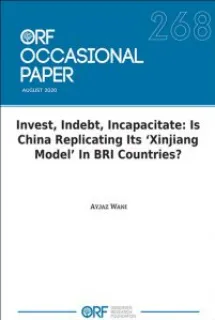

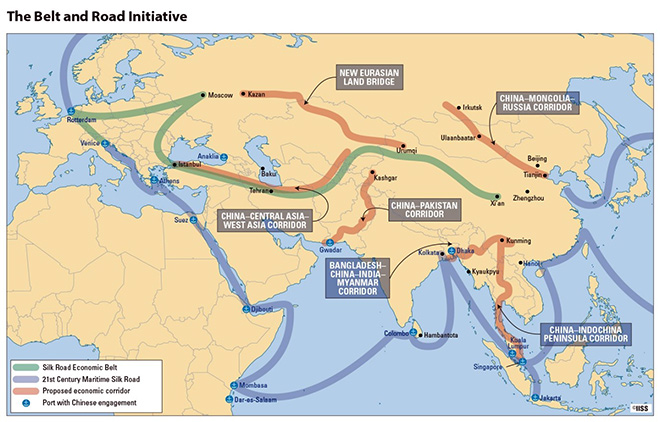
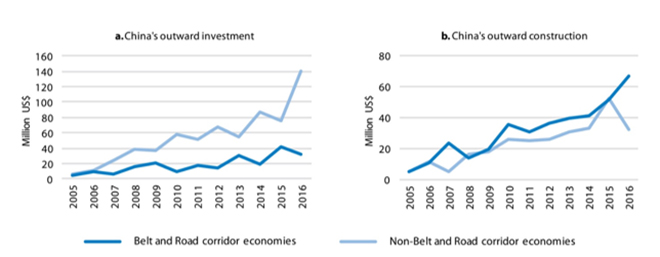
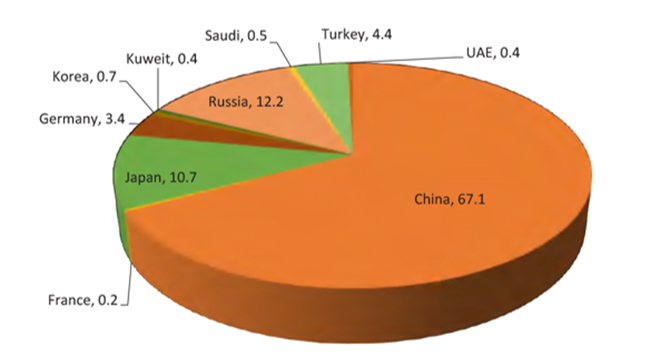
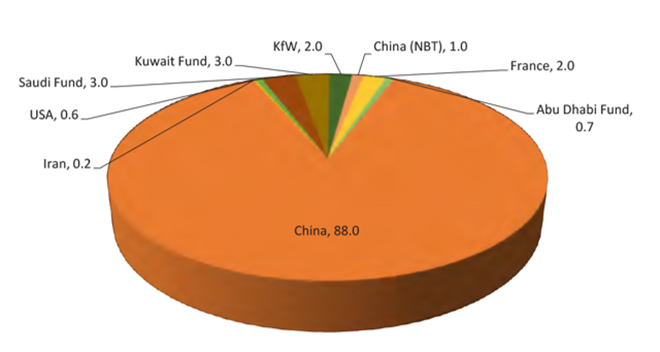
 PREV
PREV


